Top 5 Books for HR to Build a Better Culture in 2020
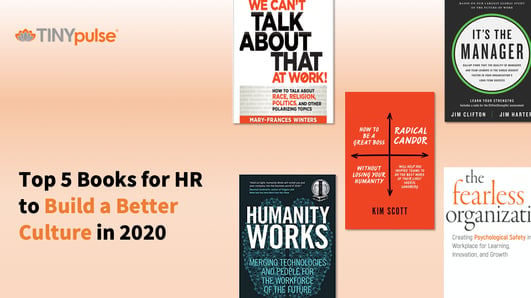
During tough times, an amazing thing happens: People improve themselves.
They take classes. They go back to school. They learn something new.
As an HR pro, you're probably still working your tail off and trying to figure out how to adjust to the new normal.
If you’re trying to learn new skills and become better in your role, we’ve got you covered. We read five of the best books for HR professionals. Read them to continue developing your skills and sharpening your leadership capabilities.
Don’t have time to read five books? We wouldn’t blame you. Each of these books has a one-sentence takeaway so you can extract the nuggets of knowledge while still having time to do your real job.
With that in mind, let’s dive right in.
1. It's the Manager
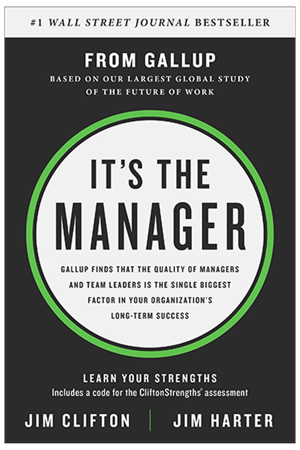
1-Sentence Takeaway: Train your managers to know how to maximize human potential — not work on administrative things.
Summary: It’s the Manager shows leaders how they can adapt to rapid changes in the new workplace. It touches upon topics like managing remote employees, the rise of AI, and attracting and keeping gig workers.
The three key lessons of It’s the Manager are as follows:
1. The most important person to lead your team through transformational change is the manager.
Vision without execution is a mere hallucination. Even though you can have the why and the what, it’s the how that will set you apart. And the how is where managers come into play.
Managers need to make sure that they implement what they tell people they will do and that they lead by example. And not only that—managers need to take care of team members. A slight change in their professional trajectories can accelerate their careers. Managers just have to dig deep down to find it for them.
For that, use a once-a-month check-in to talk about it with your employees.
2. Give your employees more responsibility.
The one thing managers can do to change this is to give more responsibility to their employees and turn themselves into coaches.
If you teach your employees to understand the why, know the how, and are allowed to do the what, you will have engaged employees. It’s that simple.
So sit down with your team and discuss their career goals, aspirations, training, and development progress.
3. Technology requires adaptation from everyone.Successful organizations are always on top of the latest technological trends and innovations. As such, they understand how robots will replace certain skills in the workforce and how they can prepare employees for the future by pushing them into other areas of expertise.
You will need to to adapt first and then lead your employees toward skills that will help them keep their job and grow professionally.
“Leaders everywhere in the world have a tendency to name the wrong person manager and then train them on administrative things—not how to maximize human potential.” — Jim Clifton
2. We Can't Talk about That at Work!: How to Talk about Race, Religion, Politics, and Other Polarizing Topics

1-Sentence Takeaway: Taboo topics can be talked about if you establish common ground and apply the platinum rule: “Do unto others as they’d like done unto them.“
Summary: There’s a way you can handle difficult topics in the workplace, and this book gives you the right structure on how to frame those conversations to depolarize your workplace.
The three key lessons of We Can’t Talk about That at Work! are as follows:
1. It’s there, you just don’t see it.Regardless of what you might think, people are discussing race, religion, politics, and other polarizing topics at the workplace. It’s just that you, as a manager, are not there to witness it. You can’t stop that process. And if left unchecked, it may very well divide the workforce.
What you can do, however, is lead through the process and establish “the ground rules” for the conversation to happen. So ask these five questions first: Who? What? When? Where? and Why? This will provide clarity.
2. Establish common ground based on facts and data.The things that unite us are far stronger than the things that divide us. This is something the author borrows from Carl Rogers and his Rogerian method.
It’s about first establishing the common ground where the discussion can be held. And to do that, you need to base it on facts and data that both sides of the argument can accept as truthful. Only when you do this can the conversation start to happen.
To get started, try the so-called “inclusive habits”: acknowledge, legitimize, pause, accept, question, and empathize.
3. Embrace the Platinum Rule.You’ve heard of the Golden Rule. But have you heard of the Platinum Rule?
The “Platinum Rule” tells us to “Do unto others as they’d like done unto them.“ You can make this happen by following the “4Es”: exposure, experience, education, and empathy.
"Come from your heart, learn from your mistakes, and continue to contribute to making this a more inclusive world for all." — Mary Frances Winters
3. Radical Candor: Fully Revised & Updated Edition: Be a Kick-Ass Boss Without Losing Your Humanity
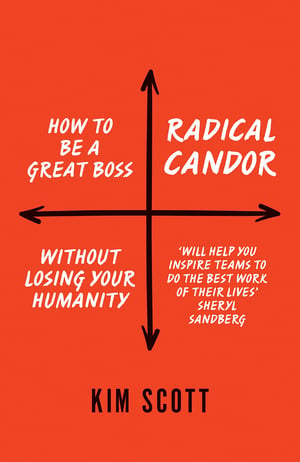
1-Sentence Takeaway: If you care personally and, at the same time, challenge directly, you can be the best manager your employees ever had.
Summary: You don’t have to choose between being a pushover or a jerk. You can be kind and clear and the book gives you structure on how to achieve that.
The three key lessons of the Radical Candor are as follows.
1. Care personally.
As a manager, you need to deeply and personally care for your employees and wish them the best that you can. This will elicit empathy from you to give them good feedback, encouragement, and motivation.
2. Challenge directly.
It’s not enough to just care for your employees—that’s one part of the equation.
The other one is to challenge them directly to become the best version of themselves. This is where you will be able to give them “bad feedback” because you care enough for them and you want to see them become better and grow personally and professionally.
3. Stay centered.
You can’t really take care of others if you don’t take care of yourself.
To stay centered and make sure that you put your team’s problems, challenges, and goals at the focus of your workplace, you need to be fully present for your team. You can only be present and productive if you take care of yourself first so don’t forget that.
“Make sure that you are seeing each person on your team with fresh eyes everyday. People evolve, and so your relationships must evolve with them. Care personally; don’t put people in boxes and leave them there.” — Kim Malone Scott
4. Humanity Works: Merging Technologies and People for the Workforce of the Future

1-Sentence Takeaway: Use technology as an enhancer to lead employees through the fourth industrial revolution.
Summary: There won’t be a “robot takeover.” Instead, there will be a robot integration where machines and talent will work together, and this book explores how that will happen.
The three key lessons of Humanity Works are as follows.
1. Technology is an enhancer, not a remover.Technology won’t replace humans from the workforce, it will enhance them. Just as phones enhanced our computational power (“brain in our pockets”), so too will the technology of the future not replace us. It will just enhance our abilities.
Two examples are augmented reality and telepresence as the remote workforce grows. Use them to your advantage as the manager to better lead remote teams.
2. Networking will replace structure; swarms of online teams.
One thing mentioned in the book is “swarming.”
The term describes online teams that rapidly assemble to deliver a project and then quickly disband after the project is done—kind of in a swarming fashion. These virtual teams will be the norm in the future and—for some companies—it’s already a reality.
Figure out which projects you as a manager can give to these “swarms” to remove the workload from your full-time employees.
3. Autonomy is an essential quality for a successful career.When picking a virtual team that will deliver a project, it will be important to find people who are autonomous and assertive because they will be delivering their work without direct oversight.
Formal reporting structures will be replaced, and the “gig workers” who can work autonomously are the ones whose skills will be in high demand.
As a manager, you need to make sure to notice the shift and adapt your leadership style for this group. Also, ask questions on interviews to quickly notice if they’re autonomous. For example, “What does a regular day for you look like?” At that point, you can see if they’re in control of their time.
“The critical role that we’re going to play is that there’s no replacing human beings when it comes to certain traits, like interpersonal sensitivity, and empathy and judgment, and intuition and creativity.” — Alexandra Levit
5. The Fearless Organization: Creating Psychological Safety in the Workplace for Learning, Innovation, and Growth

1-Sentence Takeaway: Create a space where employees can speak their minds and they will reward you with loyalty, innovation, and growth.
Summary: Quality talent is meaningless if they can’t speak their minds, and this book provides the structure of how to create a fearless organization that brings success in the modern economy.
The three key lessons of The Fearless Organization book are as follows.
1. Create psychological safety.A fearless organization is one where there’s a high level of psychological safety. Employees are not afraid to fail, they can ask tough questions, and they are not reprimanded for their fallibility and humanity.
This leads to a fearless culture that creates the environment for everything else—innovation, growth, solution-orientation, and more. Be supportive toward your employees by doing check-ins and 1-to-1 meetings where you ask questions and just listen.
2. Speak up.Managers might think that they work in a fearless organization and that there is a high level of psychological trust in the team. But the problem is that the employees usually don’t think that way.
If the culture makes people afraid to share and speak up about their ideas, challenges, concerns, questions, mistakes, and knowledge, then there is still fear that stifles innovation, growth, and learning.
You will get a glance of this in check-ins and 1-to-1 meetings. But you need to provide a space for employees to share their thoughts in a team meeting. Notice what’s stopping them and try to eliminate it from the surroundings.
3. The leader’s toolkit for building psychological safetyThere are three things a leader should do to build psychological safety for its employees: set the stage by framing work and emphasizing purpose, invite participation from everyone in the team by demonstrating humility and practicing inquiry, and respond productively by showing appreciation and legitimatizing failure.
“Speaking up is only the first step. The true test is how leaders respond when people actually do speak up. Stage-setting and inviting participation indeed build psychological safety. But if a boss responds with anger or disdain as soon as someone steps forward to speak up about a problem, the safety will quickly evaporate. A productive response must be appreciative, respectful, and offer a path forward.” — Amy Edmondson
Taking your team to the next level
.jpg?width=7680&name=excited-diverse-managers-achieving-success-during-work-on-3866329_(1).jpg)
As a manager, you need to learn how to build psychological safety, understand the effects your leadership has for the team, show your employees that you deeply care about them while challenging them, stay up to date with the latest technological advances, and talk about difficult and taboo topics in the workplace.
If you want to dive into the concepts, topics, and stories mentioned above, you can read some of our blog posts that cover the topics in detail.
In the meantime, keep doing everything you can to improve. Your team will no doubt notice and thank you, and your organization will be better off because of it.
Share this
You May Also Like
These Related Stories


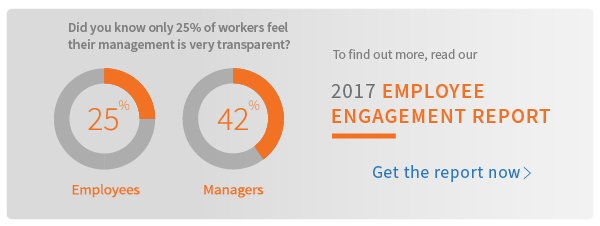

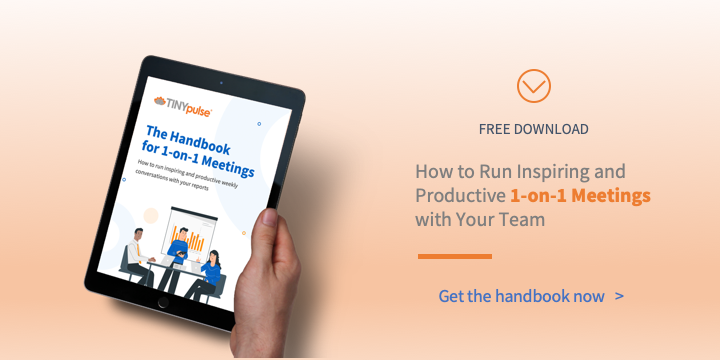


.png?width=534&height=632&name=blog%20ad%20(1).png)
